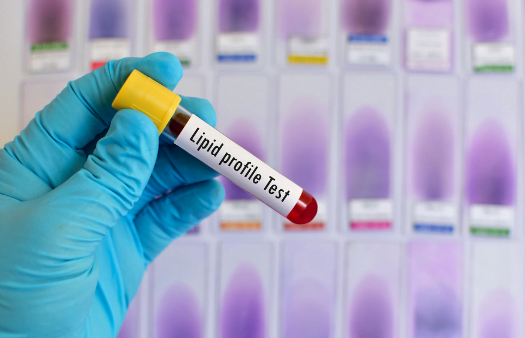Lipid Peroxidation Testing in Animal Feed Supplements
The integrity of animal feed supplements is crucial to ensure that animals receive balanced nutrition and avoid harmful by-products. One critical aspect of this balance involves lipid peroxidation testing, which measures the presence and extent of oxidative stress within lipids. Oxidative stress can lead to the formation of peroxides, which not only degrade the effectiveness of nutrients but also produce toxic compounds detrimental to animal health.
Lipid peroxidation is a significant concern in animal feed supplements due to the high lipid content present in many ingredients such as fats and oils. This process generates free radicals that can compromise the nutritional quality and safety of these supplements. By conducting thorough lipid peroxidation testing, manufacturers can ensure the stability and safety of their products.
The primary goal of this testing is to monitor the level of oxidation by-products within feed supplements. These by-products include hydroperoxides, aldehydes, ketones, and carboxylic acids—all indicators of oxidative stress. The presence of these compounds not only affects the shelf life of the supplement but also impacts its efficacy in supporting animal health and nutrition.
The testing process involves several steps. Initially, a representative sample is taken from the feed supplement batch. This sample undergoes extraction to separate lipids for analysis. Various techniques such as spectrophotometry or gas chromatography can be used depending on the required sensitivity and specificity. The extracted samples are then analyzed for peroxide value (PV), which quantifies the concentration of hydroperoxides in mg of active oxygen per kg of sample.
Hydroperoxides are particularly indicative of lipid oxidation, as they form when unsaturated fatty acids undergo auto-oxidation under conditions of high temperature or light. The formation of aldehydes and ketones further indicates advanced stages of lipid breakdown. These compounds can contribute to the rancidity of feed supplements, affecting palatability and ultimately leading to suboptimal nutritional outcomes.
International standards such as ISO 7642:1993 provide guidelines for lipid peroxidation testing in fats and oils, which are applicable to certain animal feed components. However, specific feed supplement matrices may require additional considerations. For instance, the presence of antioxidants like vitamin E or selenium can influence the rate and extent of lipid oxidation.
The importance of this testing cannot be overstated for quality managers, compliance officers, R&D engineers, and procurement personnel involved in animal feed production. Ensuring that lipid peroxidation levels are kept within acceptable limits not only enhances product stability but also supports animal health and welfare.
Applied Standards
The testing of lipid peroxidation in animal feed supplements is governed by several international standards that provide the necessary protocols for accurate measurement. These include ISO 7642:1993, which sets out methods for determining the peroxide value (PV) of fats and oils, and EN 15089:2013, which provides additional guidance on specific feed components.
ISO 7642:1993 specifies spectrophotometric methods to determine the PV of fats and oils. This standard is widely recognized for its precision and reliability in measuring hydroperoxides, which are a primary indicator of lipid peroxidation. The method involves titrating hydrogen peroxide with iodine solution using starch as an indicator.
EN 15089:2013 extends the scope to include feed supplements containing fats and oils. This standard emphasizes the importance of considering the specific composition of these feed components, including the presence of antioxidants. The standard also provides guidance on sample preparation and handling to ensure accurate PV readings.
The application of these standards ensures that lipid peroxidation testing is conducted in a consistent and standardized manner across different laboratories. This consistency is crucial for maintaining quality control throughout the production process and ensuring compliance with regulatory requirements.
Scope and Methodology
| Step | Description |
|---|---|
| Sample Collection | A representative sample is taken from the feed supplement batch to ensure a true reflection of lipid peroxidation levels. |
| Lipid Extraction | The collected sample undergoes extraction using solvents like chloroform-methanol mixture to isolate lipids for analysis. |
| Measurement of Peroxide Value (PV) | Peroxide value is determined using a spectrophotometric method as per ISO 7642:1993. This involves titrating hydrogen peroxide with iodine solution and observing the endpoint visually or through a colorimeter. |
| Assessment of Aldehydes and Ketones | The presence and concentration of aldehydes and ketones are assessed using gas chromatography to identify advanced stages of lipid breakdown. |
The methodology outlined above ensures that lipid peroxidation testing is conducted with precision and accuracy, providing reliable data for quality control and compliance. The use of recognized international standards such as ISO 7642:1993 and EN 15089:2013 guarantees consistency in the testing process.
Use Cases and Application Examples
Inclusion of fish oils or plant-based fats in feed supplements requires regular lipid peroxidation testing to ensure the nutritional integrity of these ingredients. Oxidative stress can reduce the bioavailability of essential fatty acids, leading to suboptimal health outcomes.
Manufacturers using synthetic antioxidants like butylated hydroxyanisole (BHA) or butylated hydroxytoluene (BHT) in their feed supplements must monitor lipid peroxidation levels. These antioxidants can themselves contribute to the oxidation process if not used correctly.
Lipid peroxidation testing is also crucial for evaluating the stability of feed supplements during storage and transportation. High temperatures and light exposure can exacerbate oxidative stress, affecting the shelf life of these products.
- Testing for lipid peroxidation in feed supplements with high-fat content ensures that these products remain palatable to animals.
- The presence of antioxidants like vitamin E or selenium should be monitored alongside lipid peroxidation levels to ensure they are effective in preventing oxidative stress.
These use cases highlight the importance of regular lipid peroxidation testing in maintaining the quality and safety of animal feed supplements. By adhering to these standards, manufacturers can ensure that their products meet the highest nutritional and regulatory requirements.





